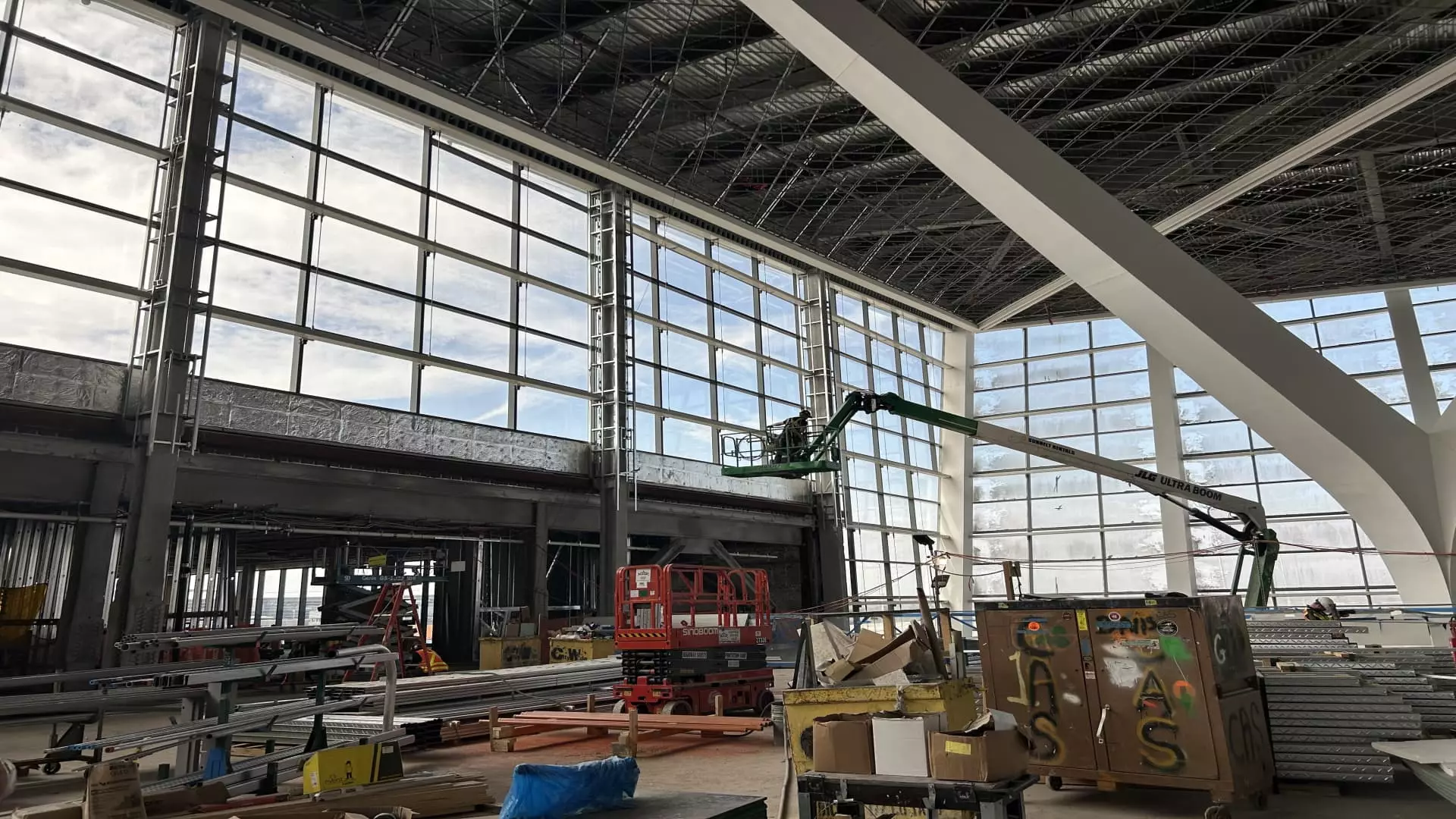The ongoing transformation of John F. Kennedy International Airport epitomizes a grand vision for modern air travel, blending innovative architecture, enhanced passenger experience, and strategic capacity expansion. As the centerpiece of a $19 billion overhaul, Terminal 1 emerges not just as a concrete structure but as a symbol of aspiration, resilience, and forward-thinking transportation policy. This project underscores an unwavering commitment to elevate New York’s status as a global gateway, signaling a decisive shift toward passenger-centric, highly efficient international travel.
The sheer scale of Terminal 1 is staggering—expected to be the largest at JFK, matching the combined size of recent LaGuardia expansions—highlighting the urgency to modernize aging infrastructure to meet surging international passenger demands. Its first phase, poised to open in 2026, signifies more than a facelift; it promises a reimagined travel environment designed explicitly for international visitors, reflecting contemporary aesthetic sensibilities and operational demands. This focus confirms a strategic recognition that airports are crucial nodes in global commerce and tourism, demanding facilities that foster comfort, convenience, and efficiency.
Design Innovation: A Paradigm Shift in Airport Architecture
At the core of the new JFK Terminal 1 lies a revolutionary architectural concept—a building that aims to flood travelers with natural light, eliminate hassles typical of traditional airport layouts, and foster a seamless flow of services. Its design, crafted by Gensler, employs sweeping, butterfly-inspired forms that symbolize flight, freedom, and elegance. The central body of the terminal splits the structure, facilitating intuitive navigation and operational efficiency while producing a striking aesthetic that evokes grace and technological mastery.
Fundamentally, the emphasis on user experience is clear: departures, security, and customs are consolidated on a single level, breaking free from the antiquated basement queues. The wall of inclined windows not only maximizes daylight but also creates a sense of openness and calm amid the often stressful airport environment. Such architectural choices redefine what travelers should expect from a major international hub—places where functionality and beauty coexist and where convenience is baked into every aspect of design.
Moreover, the ongoing construction process showcases meticulous planning—winding baggage conveyor belts, carefully laid future ticket counters, and visible progress in structural elements—signaling a focus on transparency and accountability. As these components come together, they form a hub purpose-built to handle long-haul aircraft, with ample gates, spacious lounges, and retail spaces centered around passenger comfort rather than mere throughput.
Operational Capabilities and Strategic Significance
The new terminal’s capabilities extend beyond aesthetics; they mark a significant upgrade in operational efficiency crucial for competing in today’s bustling international aviation market. With 23 gates—especially 22 accommodating wide-body jets—the facility is poised to handle over 14 million passengers annually, a testament to its forward-looking scale. This capacity aligns tightly with the expected growth of international travel, ensuring JFK remains competitive against global hubs.
The inclusion of 300,000 square feet dedicated to retail, dining, lounges, and recreational amenities signals an understanding that airports are no longer simply transit points but full-scale experiential environments. Innovative features like exclusive cash-and-carry duty-free shopping further elevate the passenger experience, offering convenience and a touch of luxury—especially beneficial for travelers who prefer immediate gratification.
Additionally, the integration of the AirTrain’s new stop at Terminal 1 exemplifies an integrated transportation approach, reducing transit times and easing the journey for arriving and departing passengers. Roadway improvements around JFK are likewise vital, alleviating congestion that has historically hampered efficiency at one of the world’s busiest airports. These infrastructural enhancements culminate in a comprehensive upgrade ready to support increased traffic and maintain JFK’s relevance as an international gateway.
Strategic Impact and Broader Implications for the US
The JFK Terminal 1 project exemplifies the broader national push to overhaul outdated airport infrastructure nationwide—a necessity underscored by the staggering $173.9 billion investment gap projected through 2029. As elite hubs like JFK prioritize modernization, the ripple effects will resonate across the US, setting new standards in passenger experience, operational resilience, and economic competitiveness.
While the project’s impressive budget and ambitious scope reflect confidence, they also invite scrutiny: Will the final product meet the lofty expectations set forth during planning? Will the timelines be met, especially considering construction complexities and funding intricacies? Yet, perhaps most critically, the project signifies a strategic acknowledgment that airports are essential engines of economic vitality, requiring continual reinvestment and innovation.
Securing a prime position just ahead of the 2026 World Cup enhances JFK’s global stature, ensuring it is prepared to handle the influx of international visitors with style and efficiency. As new terminals and upgraded infrastructures materialize, the significance of the airport transcends mere transportation—it becomes a statement of national pride, economic foresight, and unwavering dedication to passenger excellence.
Reimagining JFK’s Terminal 1 is more than an infrastructural upgrade; it is a bold declaration of America’s commitment to leading in global aviation. As it takes shape, the world will be watching—ready to embrace a new chapter in international travel that is more connected, seamless, and inspiring than ever before.

